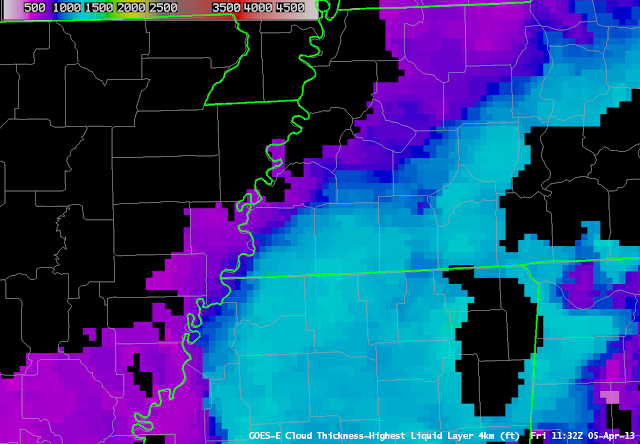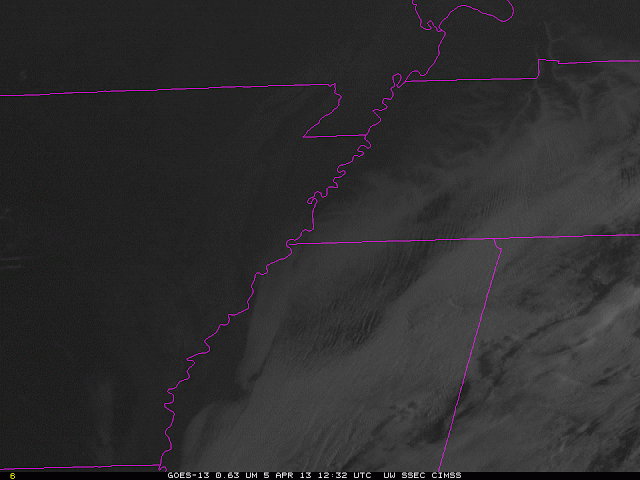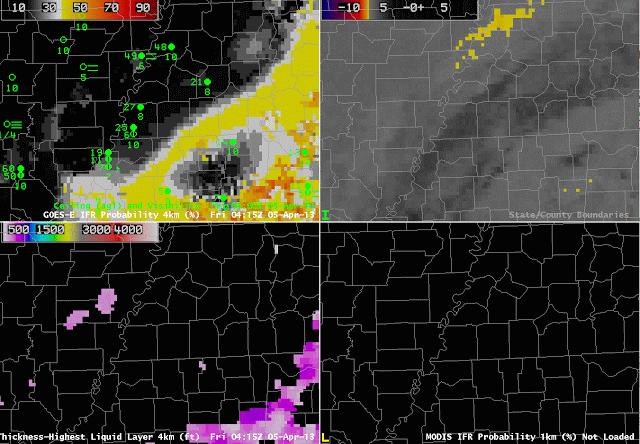Late-in-the-day rains followed by clearing skies and light winds set the stage for radiation fog over much of western Tennessee early on April 5th. The GOES-R Cloud Thickness product allows forecasters to estimate when radiation fog will burn off.
The animation above shows the retreat of rain clouds to the south and east, and the development of radiation fog. The IFR Probabilities around 0815 UTC — both GOES and MODIS — suggest a separation between the low stratus that is over Mississippi and Alabama and the fog over western Tennessee (the stratus shifts eastward and the radiation fog quickly develops).
GOES-R Cloud Thickness can be used to predict when a radiation fog will burn off, using this chart and the final pre-twilight cloud thickness field (Cloud thickness is not computed during twilight conditions). The last cloud thickness field image produced is shown below:
 |
| GOES-R Cloud Thickness, Friday 5 April 2013 at 1132 UTC |
Fog/Cloud Thickness is greatest, a bit more than 1100 feet, in Fayette County just east of Memphis and in Henderson and Chester Counties a bit farther to the east and north. Scatterplot points on the chart suggest that the fog could burn off in 3 or so hours after the 1132 UTC image above. The visible loop animation, below, shows fog has cleared by 1432.
 |
| Visible imagery animation, 1232-1432 UTC on April 5 2013 |

